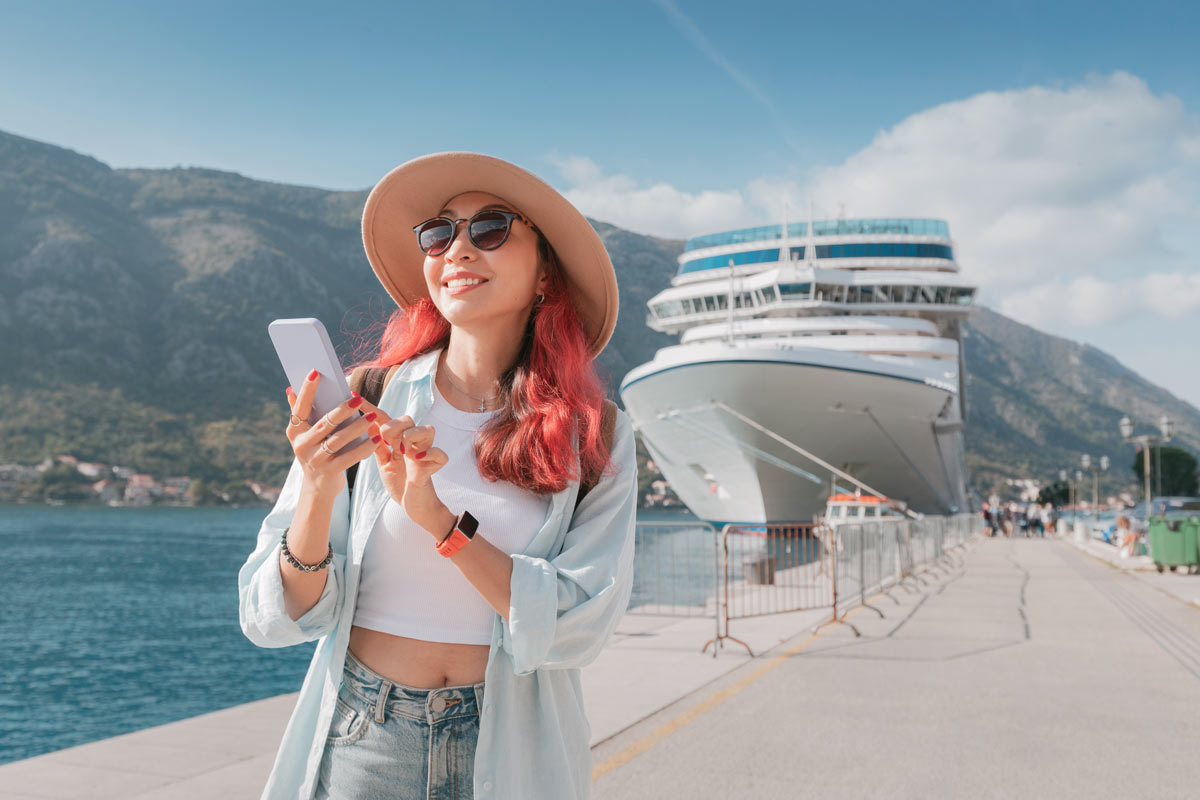Marketing for Cruises
How cruise brands can use data to create tailored passenger experiences
Setting sail for success
The number of people choosing to cruise is at a record high, with 2.4 million UK consumers crossing the gangway each year, according to the Cruise Line International Association (CLIA). What’s more, global cruise ship capacity is expected to increase a strong 10% by 2028.
Alongside this steady growth, the cruise industry is in a period of rapid evolution, with passenger demographics, preferences, and motivations changing quickly. Cruise lines must adapt and diversify their offerings, as well as how they communicate those offerings to audiences, so they can attract new cruisers while retaining their existing customers.
So, what’s on the horizon for the cruise industry and how can cruise lines use their data to embark on a voyage to customer experience success?
Cruise passengers are getting younger
The most notable change in cruise passenger demographics is age. Once thought of as the domain of rich retirees, cruises are increasingly appealing to younger generations. The average age of the British cruiser fell from 57 to 54 over the last five years, and the global average is just 46. To further illustrate this trend, P&O Cruises recently reported a record number of bookings for weddings at sea, as cruise holidays gain popularity among young couples looking for a memorable way to tie the knot.
There are many other trends – some seemingly contradictory – that are intrinsically linked to the changing demographic of cruise passengers. Examples include:
Solo travel vs. multi-generation trips
When Millennial and Gen Z passengers do take a cruise, they’re more likely to travel alone than other age groups, resulting in a rise in solo travel. Cruise lines need to respond by rethinking single supplements and their provision for solo passengers. At the same time, cruises are becoming popular for multi-generation family holidays, with 28% of global cruise travellers sailing with three or more generations.
Newbie cruisers vs. forever sailors
With 71% of international travellers considering taking their first cruise, brands need to make sure they can stand out from the crowd and attract these new audiences. But loyalty and retention tactics are also vital as 82% of those who have taken a cruise say they will cruise again. They’re likely to encourage friends and family to do the same.
Mini trips vs. world cruises
Shorter cruises of just a few days are ideal for attracting people who are new to cruising, and may be concerned about being trapped on board for weeks. And they’re well suited to younger travellers with smaller budgets and shorter attention spans, too. But world cruises are also gaining popularity, with travellers taking the opportunity to visit multiple continents over many months.
Smart ships vs. digital detox
Cruise ships increasingly use smart technologies to improve the onboard experience. Think facial recognition to speed up check in and AI assistants to help with excursion booking. At the same time, digital detox cruises are gaining popularity, allowing passengers to escape from screens, social media, and work emails for the duration of the voyage.
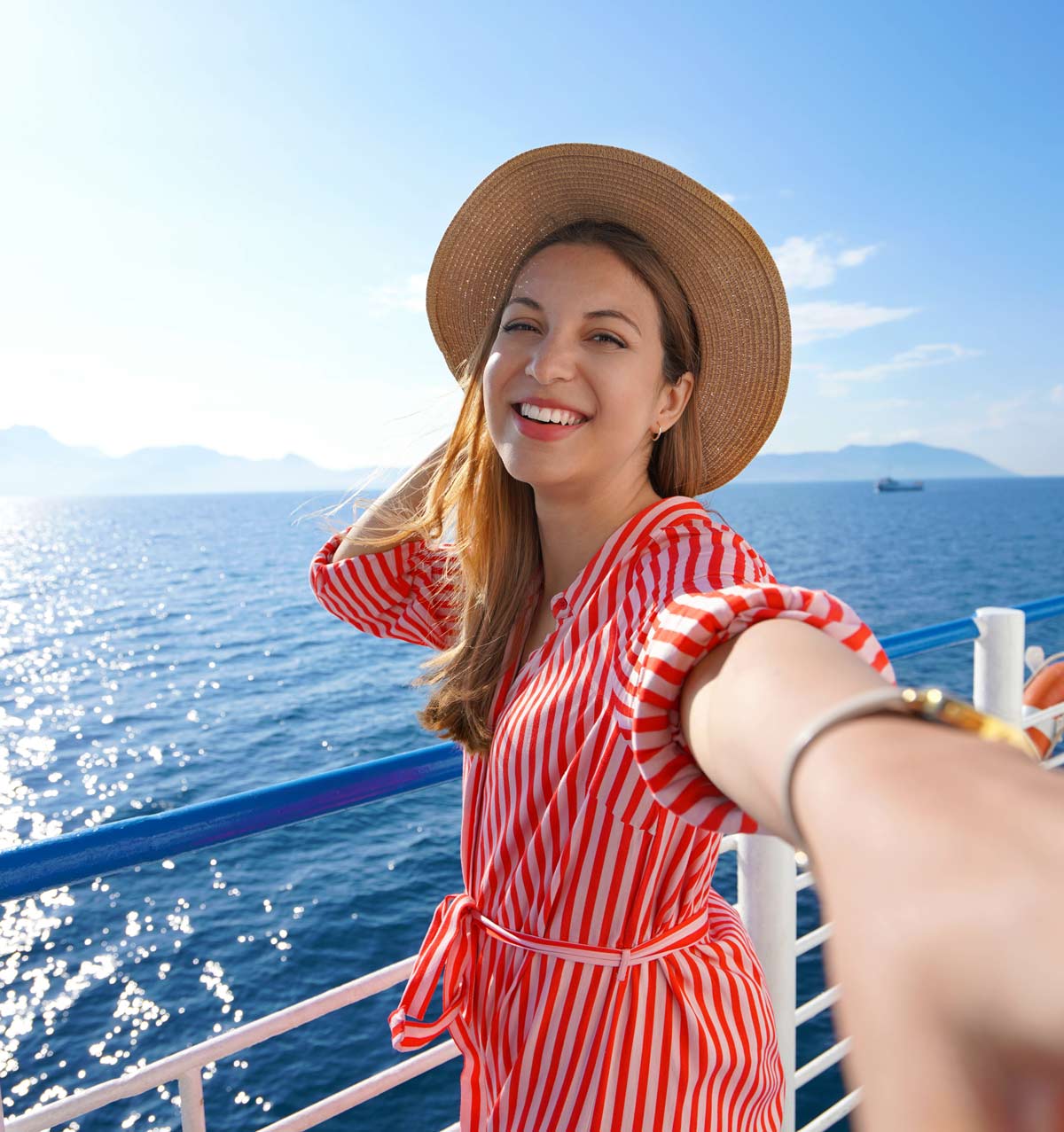
Motivations for cruising are changing
According to a Kantar study, the top three things that make cruising appealing to all age groups are:
- Visiting multiple destinations in one trip
- All-inclusive pricing and convenience
- Luxurious on-board amenities
But alongside these broad motivations other, more specific factors are increasing the popularity of cruises among younger demographics. A safe, child-friendly environment is likely to be a motivator for parents, with 51% of families with children saying they would consider taking a cruise in the near future compared with 26% of adult households with no children.
A more sustainable way to travel is also appealing to younger generations, and cruises are seen as an eco-friendly way to see the world consciously and mindfully. Cruise lines are taking action to make their voyages as sustainable as possible, as illustrated by Marella Cruises’ microfibre filter initiative.
Finally, easy access to adventurous activities and excursions, as well as an increasing range of dining and entertainment options that go well beyond the traditional buffet and cabaret offerings, are increasingly tailored to younger travellers.
“These days, it’s not just about the destinations but also the curated experiences – be it activities such as hiking, cycling or kayaking, or cultural tours and wine tastings. What we know is younger people want to try something new.”
— Andy Harmer
Managing Director, United Kingdom & Ireland, CLIA, talking to National Geographic
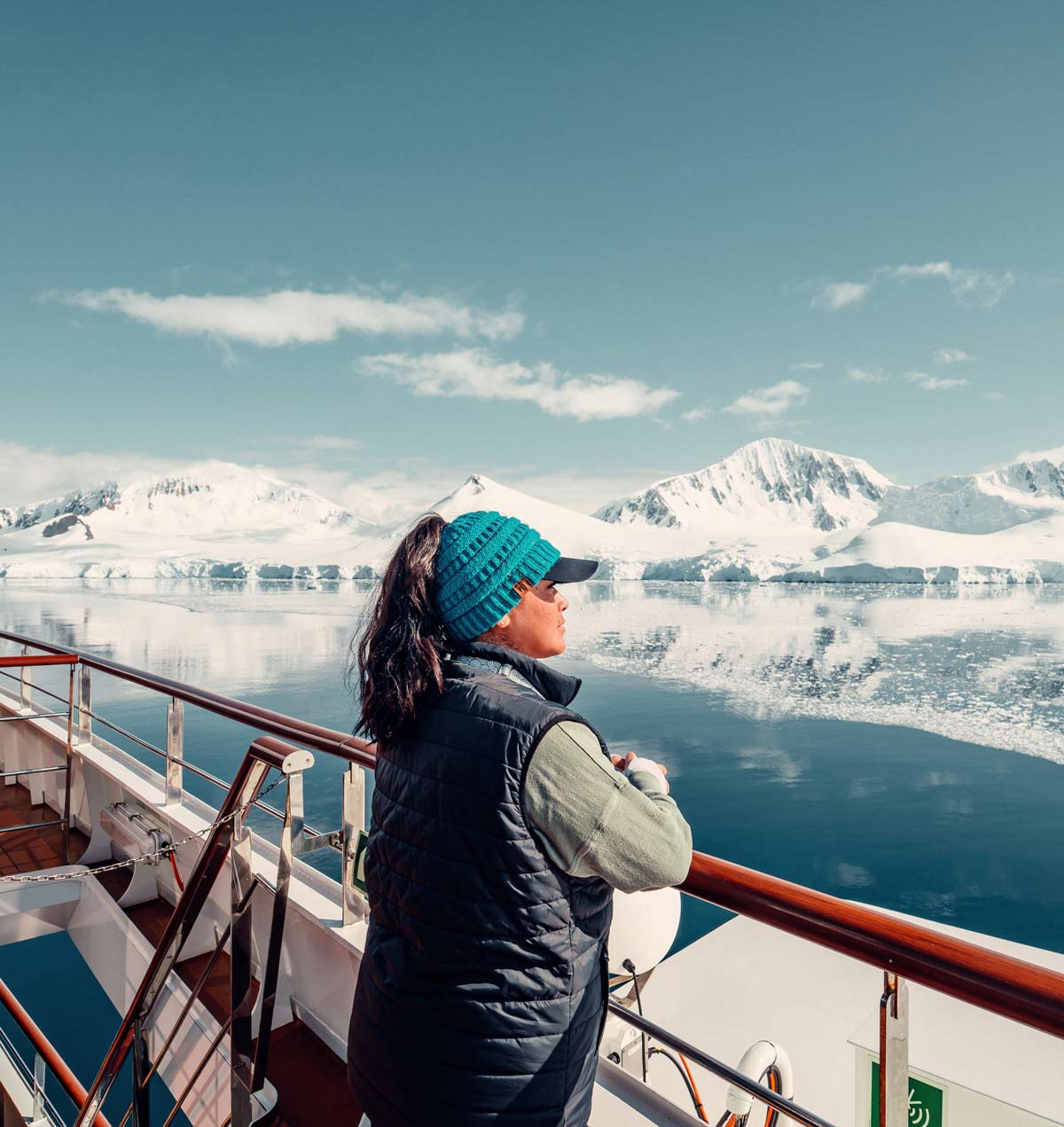
Cruise brands are evolving their offerings
Cruise lines are providing a more diverse range of voyage types or expanding the experiences they offer to meet passengers’ changing needs:
Virgin Voyages introduced an annual pass that allows wealthy wanderlust explorers to hop onto any of its exclusively adult cruises for a full calendar year.
Silversea runs voyages to Antarctica where adventurous passengers can enjoy whale watching, take a polar plunge, or make a trip in a Zodiac or kayak.
Disney Cruise Line is launching a new ship, the Disney Destiny, where everything from the design to the dining has a family-friendly ‘Heroes and Villains’ theme.
Marella Cruises runs a popular ‘Electric Sunsets 90s vs 00s’ three-night themed adult-only cruise for party people, with a star-studded entertainment lineup.
P&O Cruises offers Food Hero experiences on some sailings, where celebrated chefs elevate onboard dining as well as leading masterclasses for foodies.
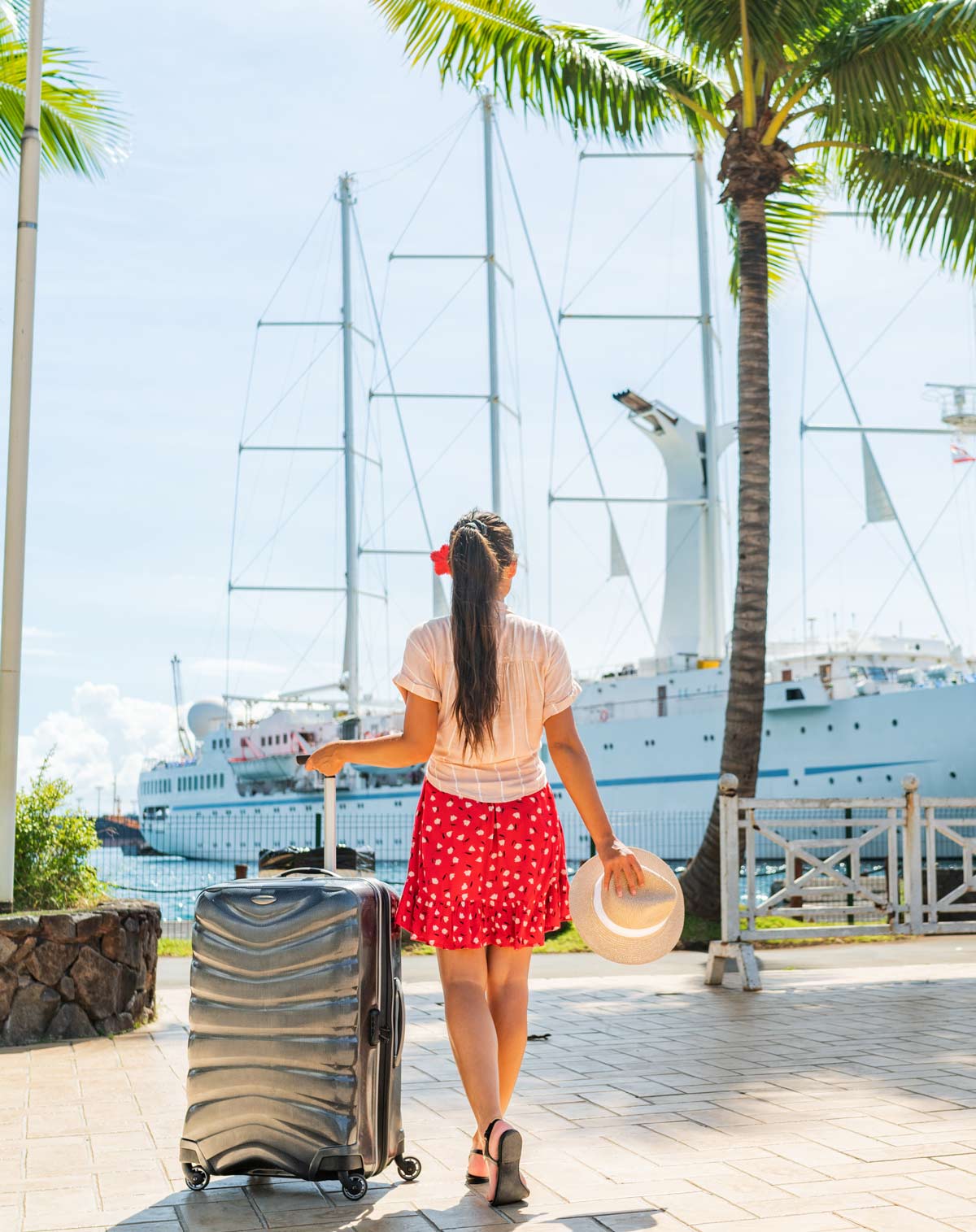
Interactions must be tailored to individuals
In this changing landscape, cruise lines must tailor their marketing and communications to very different audiences.
The way they talk to a potential customer looking for a luxury, adults-only cruise will be very different to the way they interact with someone planning an affordable, family-friendly trip. Equally, the way they approach someone who’s never been on a cruise and requires convincing shouldn’t be the same as the way they engage a customer who’s been cruising for years and might be ready to upgrade.
Cruise brands need to be able to identify and reach the right audiences for their unique offerings. And, once they’ve found those audiences, they need to understand their motivations and preferences, so they can engage them with the right experiences.
Are they more likely to respond to an offer of free flights to the departure port, a discounted cabin upgrade, or vouchers to spend on excursions? Will they engage better with content about on-board dining options or musical entertainment? To get the best results from their marketing campaigns, cruise brands need the data to answer these questions.

There are obstacles to personalised experiences
But cruise brands are up against a variety of challenges in delivering relevant, tailored experiences. These include:
- A lack of digital marketing agility: Cruise brands often struggle to adapt their marketing quickly to changing customer needs. What’s more, they find it hard to effectively measure the ROI of their digital efforts or use the results to optimise campaigns in flight.
- A lack of consistency across channels: Cruise customers (or potential customers) are exposed to content and messaging across a wide range of channels, from digital advertising and TV commercials to printed brochures and in-port campaigns. Creating seamless, personalised experiences across all these channels is a real challenge.
- A lack of real-time personalisation: Like most travel brands, cruise lines find it hard to dynamically adjust their messaging based on the behaviour or preferences of the traveller receiving it. Acxiom research reveals only 37% of travel brands are currently employing tailored communications to improve customer experiences, and even fewer (35%) are making recommendations based on customer data.
Anchor your strategy in data and technology
Acxiom offers a range of solutions to assist hotels in putting their data to work. For instance, with At Acxiom we help cruise lines and other travel brands put their data and technology to work to conquer these tough challenges. Here are five things cruise brands should be thinking about as they strive to deliver powerful customer experiences in a changing landscape:
1. Unified data provides a strong foundation
Cruise brands have access to a wide range of first-party customer data from which valuable insights can be gleaned, including booking details, website analytics, customer reviews, and loyalty data. But this information is often stored in siloed systems. Acxiom helps bring that data together, using a variety of data management solutions to enable a single source of customer truth.
2. Identity resolution enables customer recognition
Identity resolution allows brands to recognise customers or prospects every time they connect with the brand, no matter what channel or device they use, and access a wealth of insights about their needs and preferences. Acxiom Real ID™ provides identity solutions at scale to enable consistent, relevant experiences that will give brands a competitive edge.
3. Data enrichment provides additional insights
Cruise brands can cleanse, complete, and enrich first-party data with reliable, ethically sourced second- and third-party data. Acxiom’s InfoBase gives access to over 400 anonymised customer insights with coverage of all UK addresses, while our data collaboration solutions allow brands to safely share data with trusted partners.
4. Audience building finds the right people
With a strong data foundation, cruise brands can build specific audiences – from grandparents looking for child-friendly cruises to solo travelers looking for Instagrammable adventures. At Acxiom we can identify appropriate audiences to help campaigns hit the mark. Take a look at our prebuilt summer holiday data package for inspiration.
5. Omnichannel activation improves consistency
With the right data and audiences, brands can deliver consistent, personalised messages across multiple channels to resonate with any individual. With Acxiom’s help, cruise lines can effortlessly execute omnichannel campaigns across all touchpoints, and accurately measure the performance of those campaigns in real time to power optimisation.
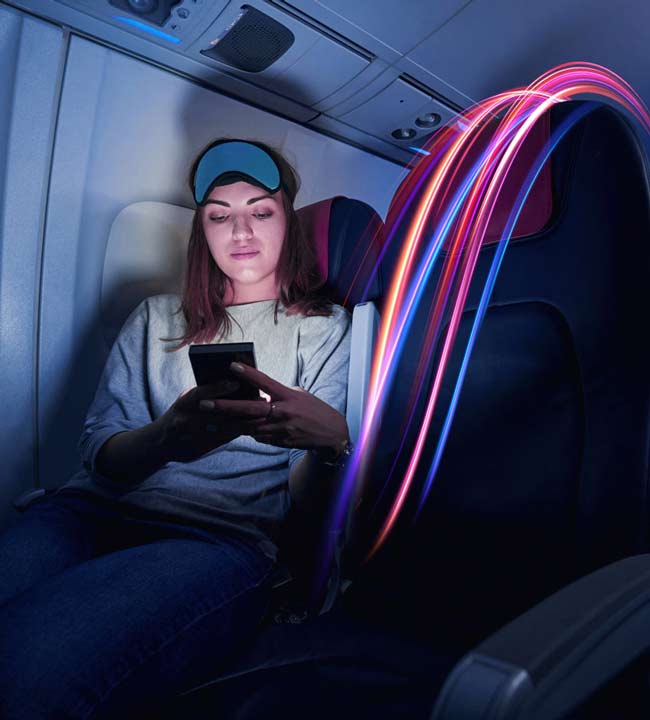
Success story: Boosting website conversion rates
A luxury cruise company improved its website experience, and drove higher conversion rates for both cruises and ancillary products.
To achieve this, Acxiom mapped the customer journey for a tailored set of key use cases using a customer data platform (CDP). We identified requirements at every touchpoint to deliver exceptional experiences.
Once requirements were identified, clear actions and owners were assigned, along with a detailed project plan that all stakeholders could work towards. Regular status calls were implemented to provide timely updates and manage expectations throughout the project lifecycle.

Ready to chart a course for success?
The cruise industry is set for continued growth as younger travellers are attracted to the luxury, convenience, and sustainability of cruise holidays. By unlocking the power of data and technology, cruise brands can reach the right audiences for their diverse offerings, and engage those audiences with meaningful experiences that are tailored to their preferences and motivations.
